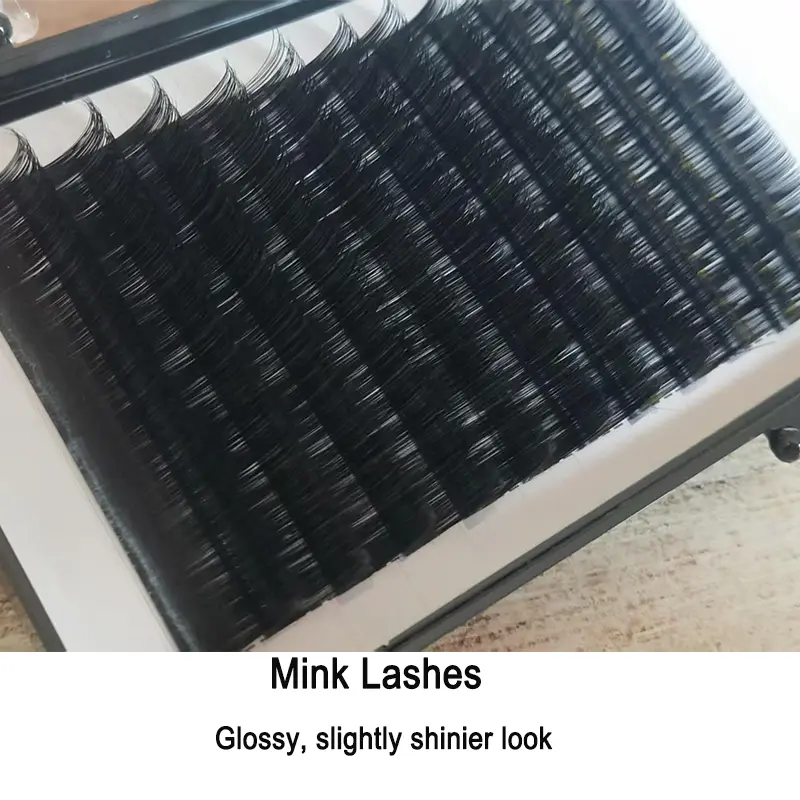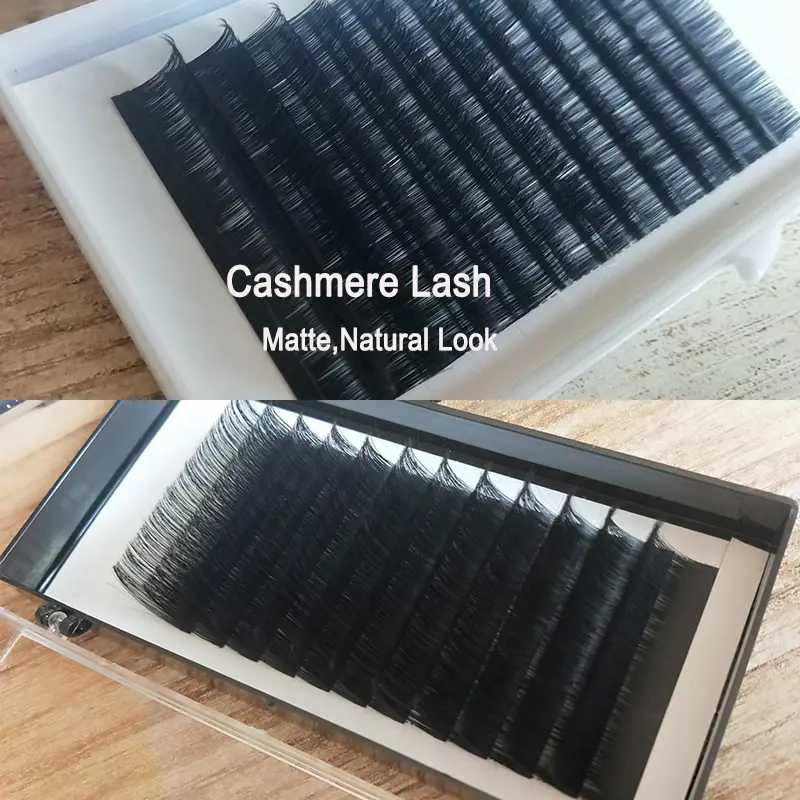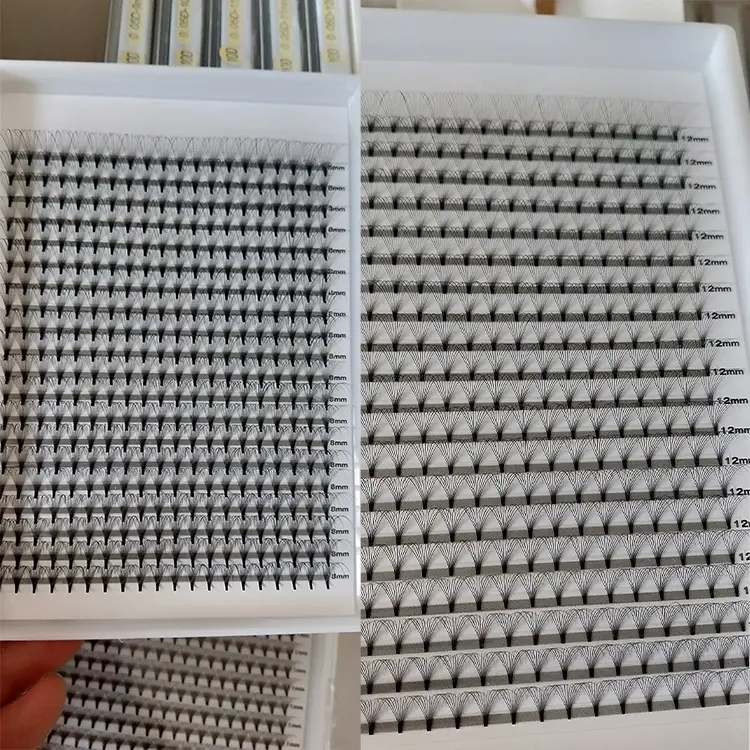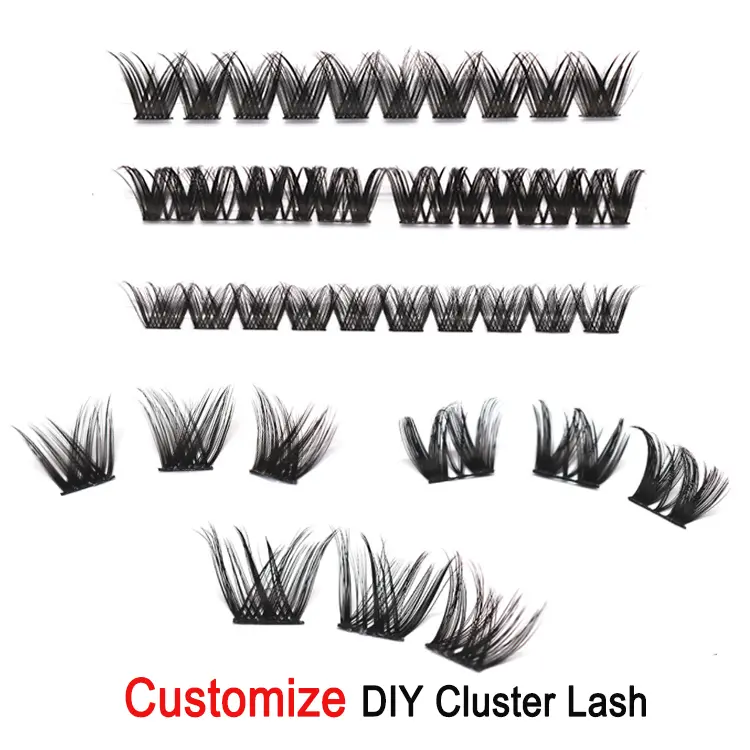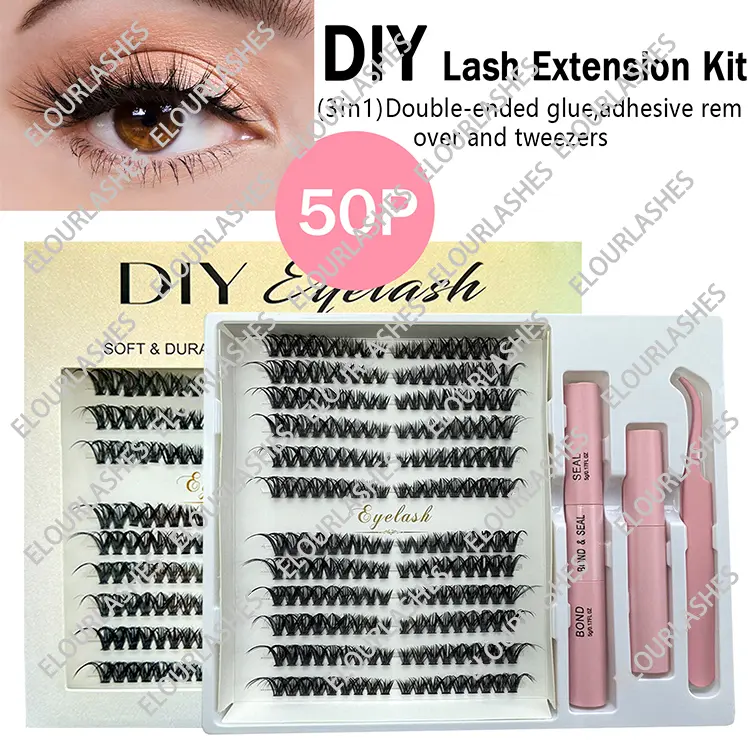Eyelash extensions have transformed the beauty industry over the past decade. According to Grand View Research, the global false eyelashes market was valued at USD 1.62 billion in 2023, and is projected to grow at a 6.1% CAGR through 2030. Among the most sought-after lash materials are cashmere lashes and mink lashes.
But which is better—cashmere or mink lashes? The answer depends on whether you’re a consumer looking for comfort and style, or a salon/business sourcing lashes for clients. In this comprehensive guide, we’ll break down the differences, pros, cons, costs, and purchasing advice to help you make the best decision.
What Are Mink Lashes?
Mink lashes were once considered the “gold standard” of luxury lash extensions. Originally, they were made from the soft fur of Siberian or Chinese mink. However, due to ethical concerns and animal rights issues, most modern “mink lashes” are actually synthetic mink lashes—crafted from PBT (polybutylene terephthalate), a high-quality plastic fiber that mimics the softness and sheen of real mink.
Texture: Lightweight, soft, glossy finish
Durability: Retain curl well, last 4–6 weeks with proper care
Cost: Mid-to-high range compared to synthetic silk lashes
What Are Cashmere Lashes?
Cashmere lashes are a relatively new innovation in the lash industry. Despite the name, they are not made of actual cashmere wool but are ultra-fine synthetic lashes designed with a flat base and lightweight structure. This unique design provides better adhesion, making them last longer while feeling feather-light.
Texture: Matte finish, softer appearance, lightweight
Durability: Stronger bond, longer-lasting than standard mink lashes
Cost: Slightly higher than mink lashes due to advanced technology
Cashmere vs Mink Lashes: A Side-by-Side Comparison
| Feature | Cashmere Lashes | Mink Lashes |
|---|---|---|
| Material | PBT fiber with flat base (engineered for adhesion) | PBT synthetic fiber (mimics real mink) |
| Weight | 40–50% lighter than standard mink | Lightweight, but slightly heavier than cashmere |
| Finish | Matte, natural look | Glossy, slightly shinier look |
| Retention | Lasts 1–2 weeks longer due to stronger bond | Lasts 4–6 weeks with refills |
| Comfort | Extremely comfortable, barely noticeable | Comfortable but less weightless than cashmere |
| Price | Slightly higher due to technology | More affordable, widely available |
| Popularity | Growing fast in premium salons | Still dominant in mainstream lash salons |
| Best For | Clients wanting long retention and comfort | Clients wanting a dramatic, glossy lash effect |
The Pros and Cons of Mink Lashes
Pros:
Soft and natural appearance
More affordable compared to cashmere
Versatile styles (classic, hybrid, volume)
Well-established supply chains, easy to source
Cons:
Heavier than cashmere lashes
Glossy finish may look less natural for some clients
Slightly shorter retention compared to cashmere
Associated with past ethical concerns (real mink fur)
The Pros and Cons of Cashmere Lashes
Pros:
40–50% lighter, making them more comfortable
Flat base improves adhesive bond → longer retention
Matte finish for a natural, soft look
Premium appeal, can be marketed as luxury service
Cons:
Higher cost than mink lashes
Not as widely available (depending on supplier)
May not suit clients wanting extra glossy/glam styles
What Do Clients Prefer?
Consumer preferences are shifting toward comfort, retention, and ethical beauty. According to a 2024 Lash Industry Report:
62% of salon clients now request lighter, more natural-looking lashes (favoring cashmere).
48% of lash artists report that cashmere lashes last 20–30% longer than mink lashes in real-world applications.
Ethical beauty trend: More than 70% of U.S. consumers prefer cruelty-free or vegan beauty products, pushing synthetic lashes (both cashmere and mink) over animal-derived options.
Cost Analysis: Cashmere vs Mink Lashes
| Item | Cashmere Lashes (per tray) | Mink Lashes (per tray) |
|---|---|---|
| Wholesale Price | $8–$15 | $5–$12 |
| Salon Service Price (Full Set) | $150–$300 | $120–$250 |
| Profit Margin | High (premium service pricing) | Moderate-High |
| Refills (2–3 weeks) | $70–$120 | $50–$100 |
Business Tip: While cashmere lashes cost slightly more to source, salons can charge 20–30% higher service fees, making them more profitable in the long run.
Retention and Performance
One of the most critical factors for lash clients is retention—how long the extensions last before needing a refill.
Mink Lashes: Retain for about 4–6 weeks, but clients typically need refills every 2–3 weeks.
Cashmere Lashes: Retain 20–30% longer, sometimes lasting up to 7 weeks with good aftercare.
This difference can save clients both time and money, which is why many are switching to cashmere lashes.
Market Trends in 2025
Shift Toward Lightweight Lashes: Clients are moving away from heavy, dramatic styles toward natural, feather-light looks.
Sustainability & Ethics: Vegan-friendly and cruelty-free lashes dominate demand; real mink lashes are nearly obsolete in most markets.
Premiumization of Services: Salons offering cashmere lashes as a “luxury upgrade” can command higher pricing.
DIY Lash Kits: The rise of at-home lash kits (especially cashmere) has grown by 25% YoY, appealing to budget-conscious consumers.
Purchasing Advice for Salons and Wholesalers
If you’re sourcing lashes for a salon or retail business, here are some tips:
Check Supplier Credentials – Work only with certified manufacturers who use safe, medical-grade PBT fibers.
Request Samples First – Compare curl retention, weight, and finish between cashmere and mink.
Balance Your Inventory – Stock both mink and cashmere to cater to different client preferences.
Market Strategically – Offer cashmere lashes as a premium, long-lasting upgrade, while keeping mink lashes as a mid-range option.
Negotiate Bulk Pricing – Large orders (500–1000 trays) can reduce costs by 20–30%.
Which Should You Choose?
Choose Mink Lashes If: You want affordable, versatile lashes with a glossy finish that most clients already know and trust.
Choose Cashmere Lashes If: You want to offer premium, long-lasting, feather-light extensions that align with modern beauty trends.
For salons aiming to stand out in 2025, cashmere lashes are becoming the top choice, thanks to their comfort, longevity, and luxury appeal. However, keeping mink lashes in stock ensures you can cater to every client’s preference and budget.
Conclusion
The Cashmere vs Mink lashes debate comes down to comfort vs tradition, longevity vs affordability. While mink lashes remain widely popular, cashmere lashes are leading the premium segment, offering superior retention and a lighter feel.
For salons and beauty businesses, the smartest strategy is to offer both options, positioning cashmere as a luxury upgrade and mink as a reliable, affordable choice. This way, you maximize both customer satisfaction and profitability.
With the eyelash extension market set to surpass USD 2.5 billion by 2030, now is the perfect time to align your lash inventory with client demands and market trends.
